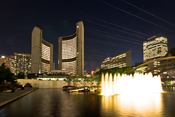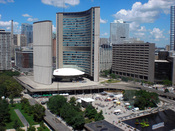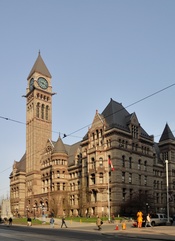Introduction
The central area of downtown Toronto is the predominant centre consisting of major government, financial, medical and educational services. The population of the City of Toronto appears to be decreasing, while the outer municipalities are gaining residents but Toronto remains a highly populated city. Downtown Toronto is a fast paced area where people are rushing to either work or school mostly by foot. This is seldom seen outside of the city where first choice of transportation is cars or bus. Unlike suburban cities, Toronto is built to accommodate the financial sector with larger offices built near the well known TTC transit system. Retail stores and eateries are built nearby for commuters, workers and students. Suburban houses are built on much larger lots consisting of front and back yards, garages and driveways. Suburbs place majority of the land is concentrated on residential areas. Gradual differences in roads, buildings and land usage are noticed heading towards the core of downtown Toronto.
Route
The 95 bus was taken to reach Scarborough Town Centre (STC) via Ellesmere Rd. There was a road expansion towards Brimley Rd. A retail area nearby had an open parking lot. Rouge Valley Health System Centenary Health Centre was on the left, it was a mid-rise with an open parking area. On the other side was a two storey institutional low-rise with an open field and small parking lot. Along the road was a few high-rises, with three tall office towers (Telus, Statefarm and Transamerica) about 30-40 stories high approaching STC. The 401 was on the north side and the civic centre on the south. Low-rise industrial buildings and few high-rise apartments were notices while riding the Scarborough Rapid Transit from McCowan to Kennedy. Towards Kennedy were a few high-rise apartments, townhouses and 2-garage homes. The SRT becomes the...


